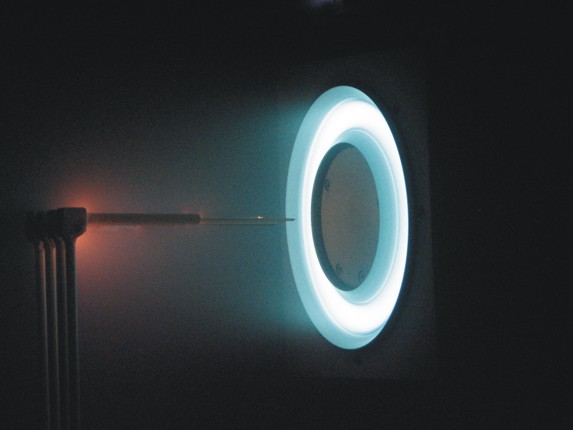Unexpected wear may yield new plasma rockets
DOI: 10.1063/1.3595137
Unexpected wear may yield new plasma rockets. A Hall-effect thruster (HET) is a type of electric propulsion system that produces thrust by the formation of an electron current around a circular channel that interacts with a radial applied magnetic field to create a strong axial electric field. That electric field then accelerates propellant ions to very high speeds. (For an introduction to HETs, see the Quick Study by Mark Cappelli, PHYSICS TODAY, April 2009, page 76.) HETs have been used on many near-Earth missions, but most deep-space travel requires extended thruster operation, typically for years, which raises a major challenge: Some of the ions smash into the ceramic channel and erode it over time, leaving critical thruster components exposed to high-energy ions. Such erosion is known to limit
a thruster’s lifetime. However, during recent testing of the commercial HET design shown here, the erosion surprisingly stopped after about 5600 hours of operation, and remained suppressed until the test ended after more than 10 000 hours. Now a team of scientists at NASA’s Jet Propulsion Laboratory has developed a new simulation code for HETs that exposed the physics behind those test results. As the channel eroded, the magnetic field topology changed and induced an effective shield against ion bombardment. The scientists suggest that carefully designing the magnetic field in future HETs can reduce channel erosion by several orders of magnitude. (






